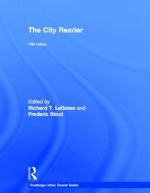
|
| Name: _________________________ | Period: ___________________ |
This test consists of 5 multiple choice questions, 5 short answer questions, and 10 short essay questions.
Multiple Choice Questions
1. "The Design of Spaces" is a result of a study requested by whom?
(a) The Wall Street Journal.
(b) The New York Mayor's Office.
(c) The Central Intelligence Agency.
(d) The New York City Planning Commission.
2. When was "The Almost Perfect Town" first published?
(a) 1956.
(b) 1952.
(c) 1957.
(d) 1953.
3. Kevin Lynch writes in "The City Image and Its Elements" about concepts that are common to cities and necessary for these areas to be what?
(a) "Morally gratifying."
(b) "Intellectually stimulating."
(c) "Psychologically satisfying."
(d) "Sexually gratifying."
4. Urban economists tend to study the economics of cities using what kind of methods, according to LeGate in "How to Study Cities"?
(a) Political.
(b) Quantitative.
(c) Qualitative.
(d) Industrial.
5. When was "The Great Towns" first published?
(a) 1845.
(b) 1844.
(c) 1835.
(d) 1856.
Short Answer Questions
1. Who wrote "City Origins" and "Cities and European Civilization"?
2. What is the first of the five zones of the city described in "The Growth of the City: An Introduction to a Research Project"?
3. What research method involves the analysis of statistical data?
4. What kind of research does not necessarily look at numbers or statistical analysis?
5. The author of "The Growth of the City: An Introduction to a Research Project" viewed the social growth and physical growth of a city as being what?
Short Essay Questions
1. What was Davis' conclusion about the patterns of urbanization in "The Urbanization of the Human Population"?
2. In Friedrich Engels' "The Great Towns," how does the author describe the other side of the river? What does he blame for the urban congestion?
3. What is Richard LeGates' purpose in the article "How to Study Cities"?
4. When did Ernest W. Burgess describe the process of expansion through zones? Why did it occur?
5. What works of W.E.B. Dubois are in the collection? What does Dubois center on in his writing?
6. What is the basis of study in "A New Geography of Centers and Margins: Summary and Implications"? What did the author conclude?
7. What city does Pirenne discuss in "Cities and European Civilization"? How does he describe it?
8. Describe author Kingsley Davis. What works is he most well-known for?
9. What is The City Reader aimed at in the academic setting? What authors in the selection have specialties in the field of urban study?
10. How is The City Reader structured as an anthology?
|
This section contains 911 words (approx. 4 pages at 300 words per page) |

|




